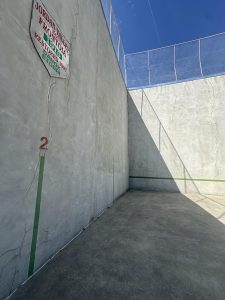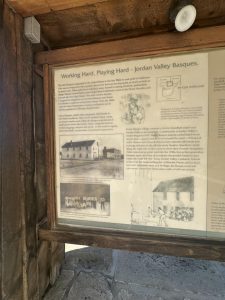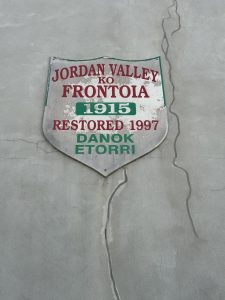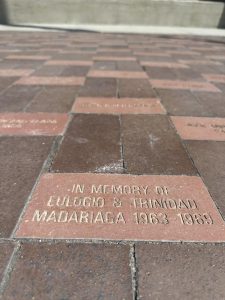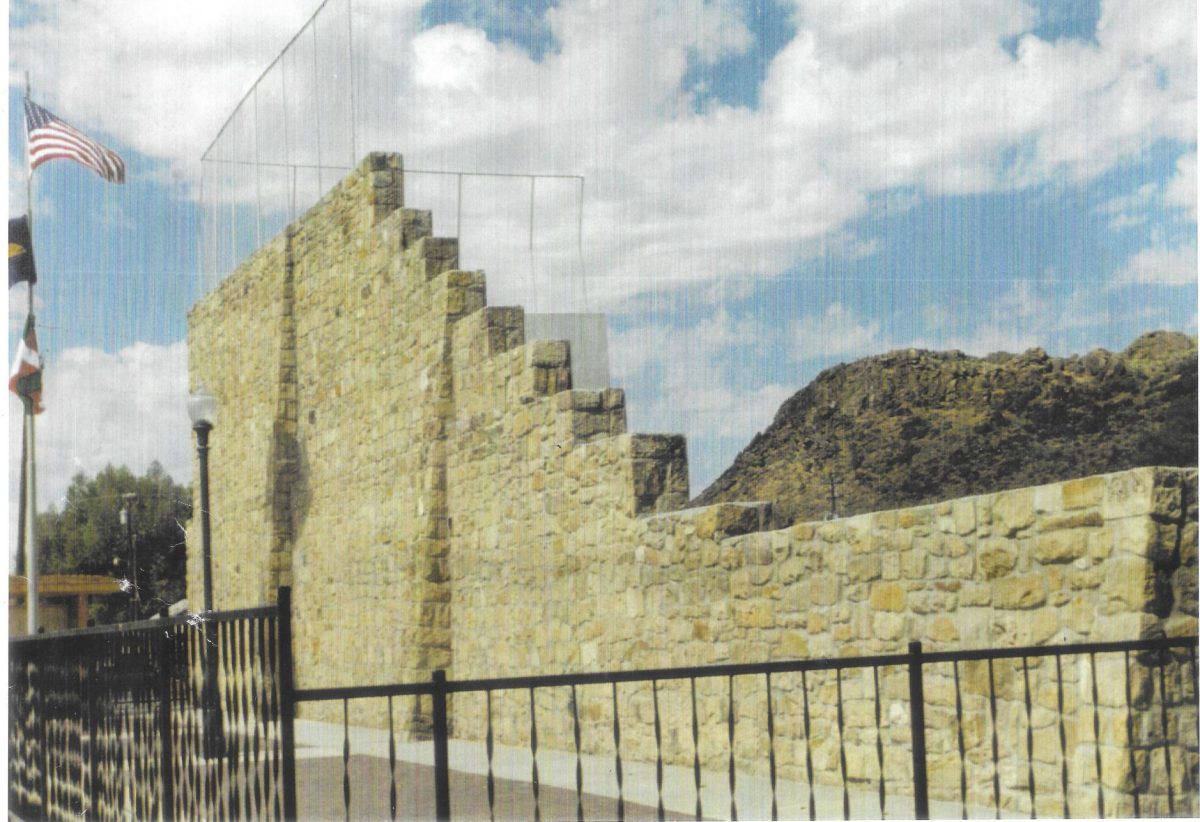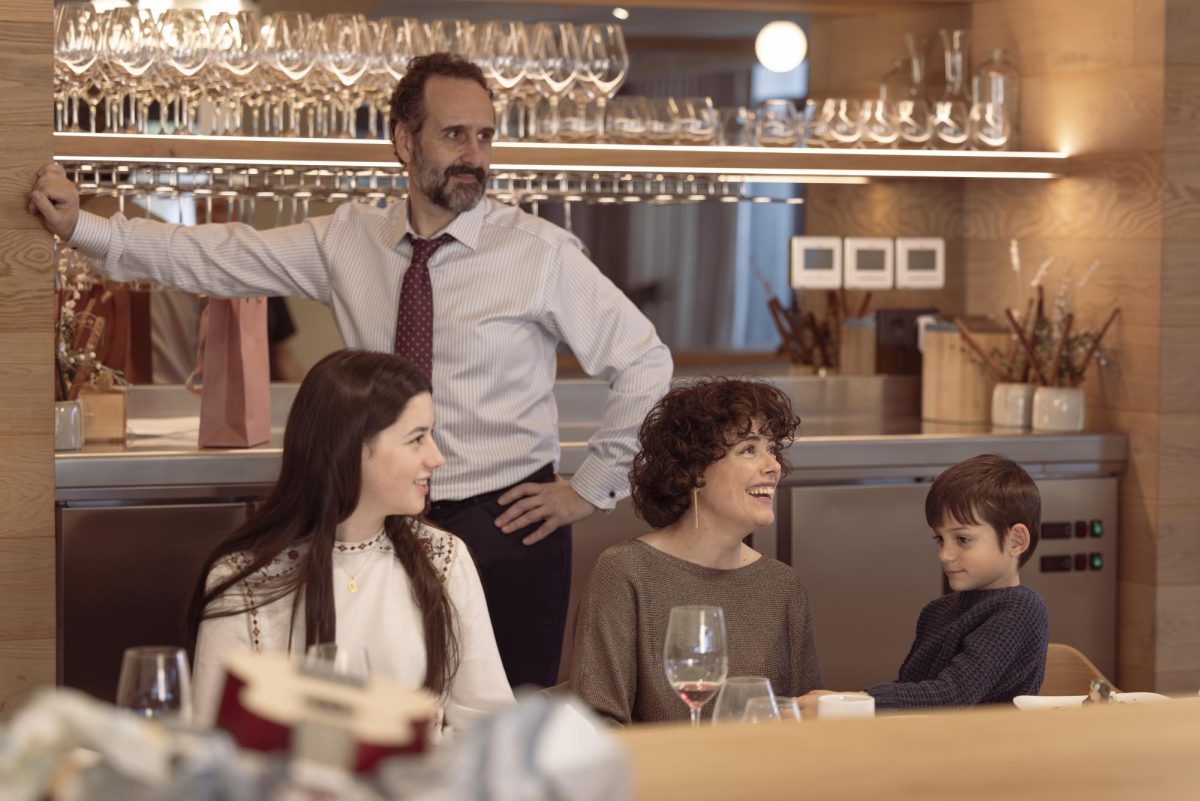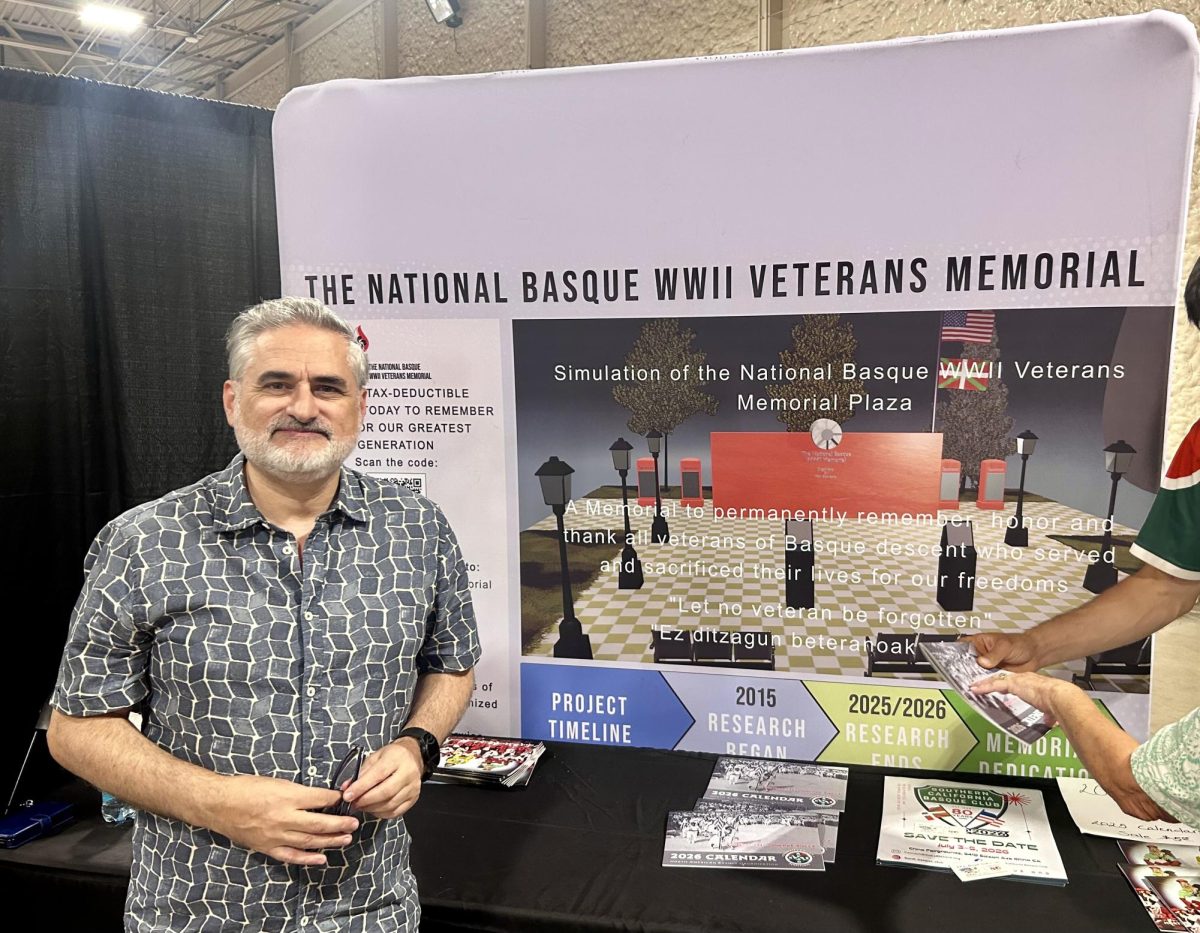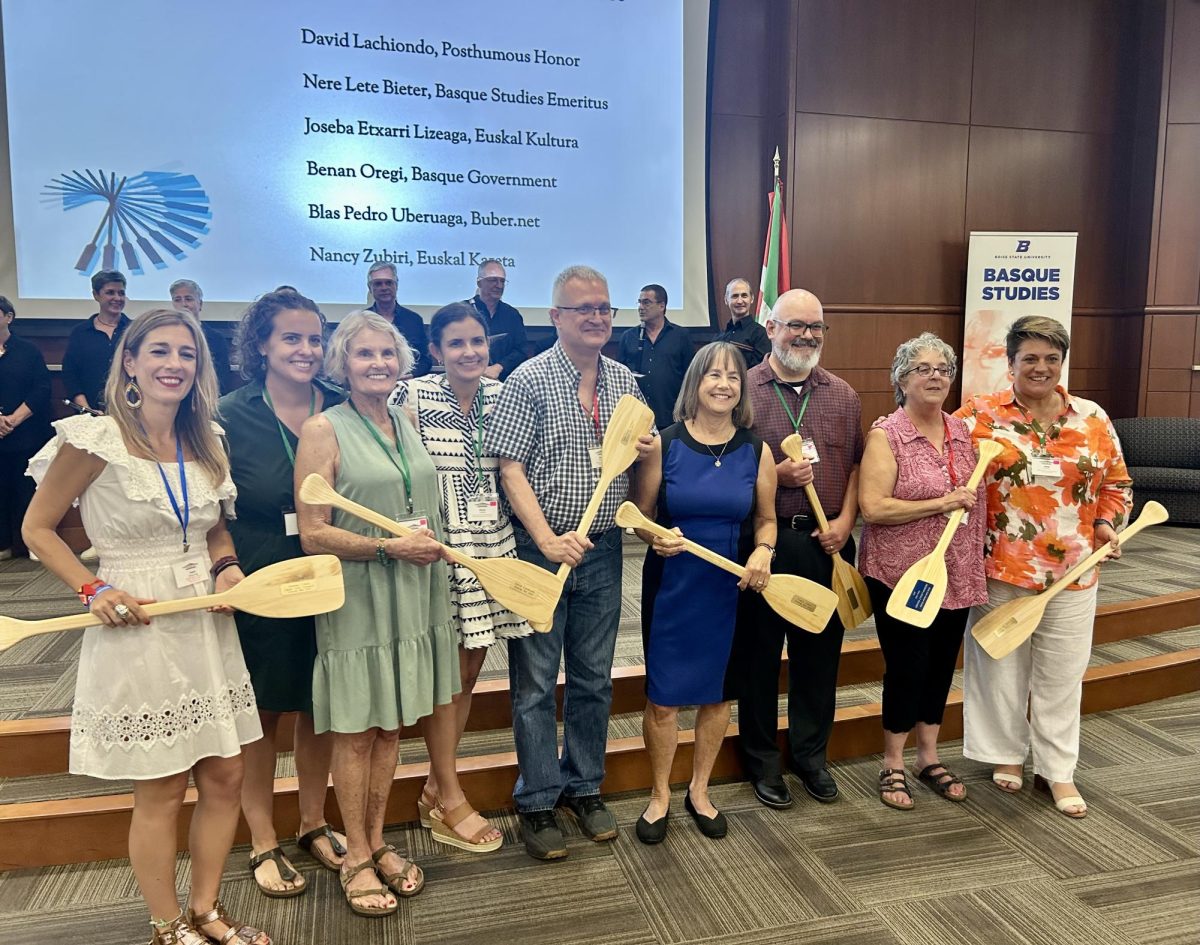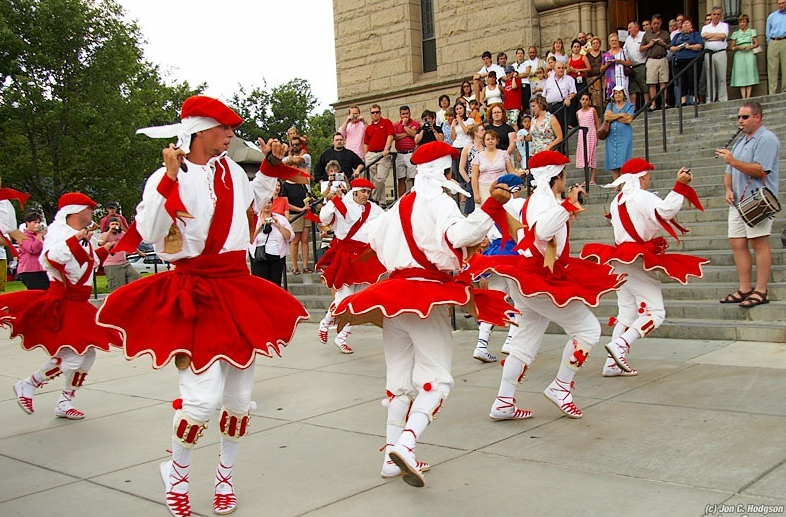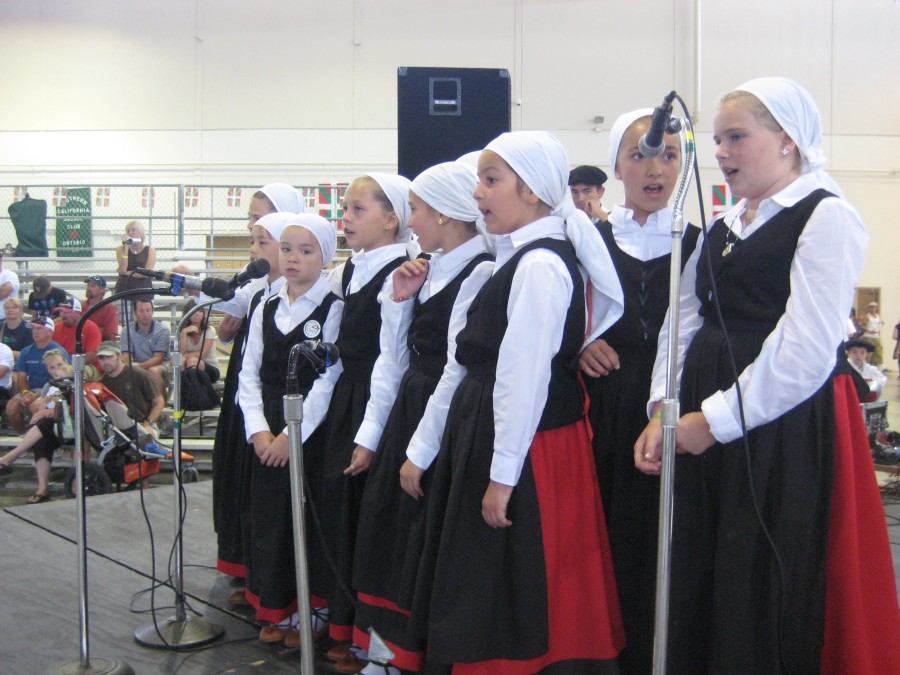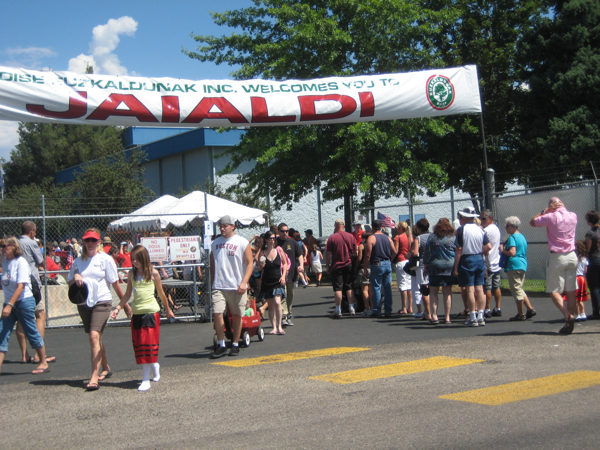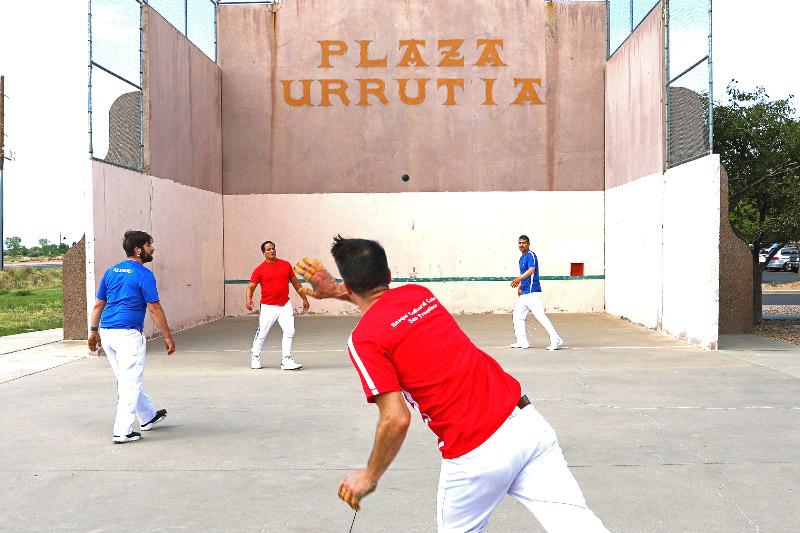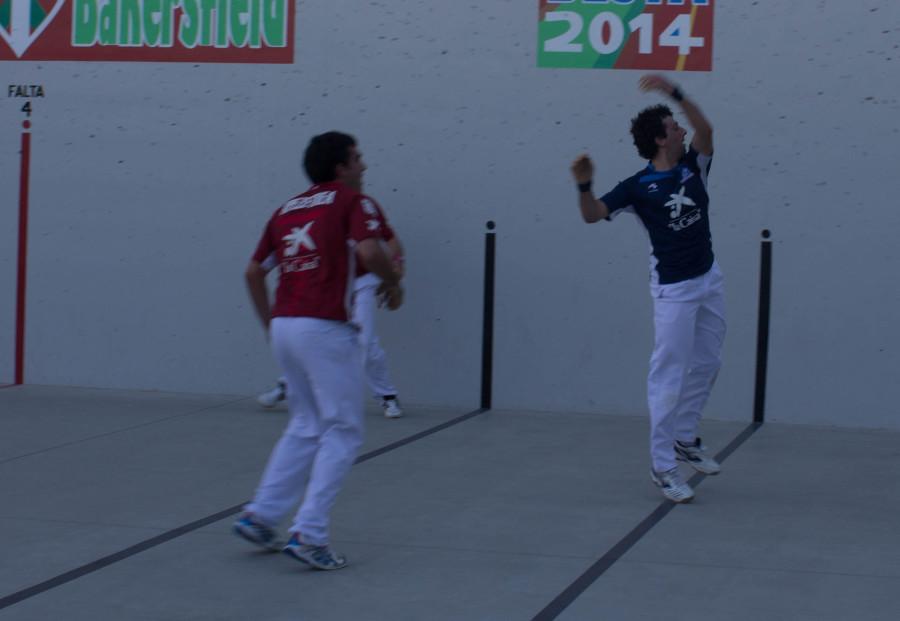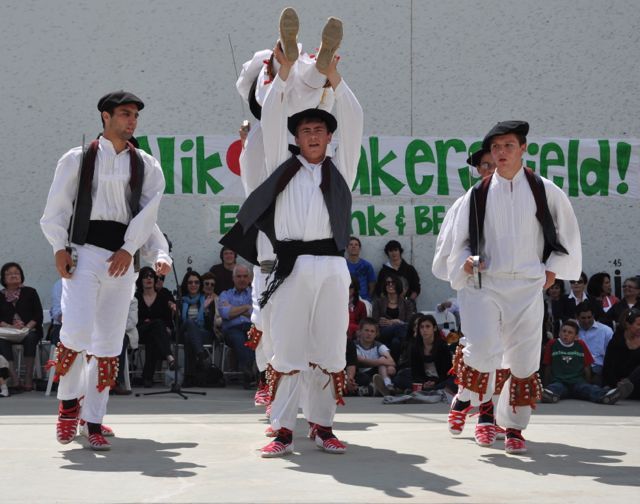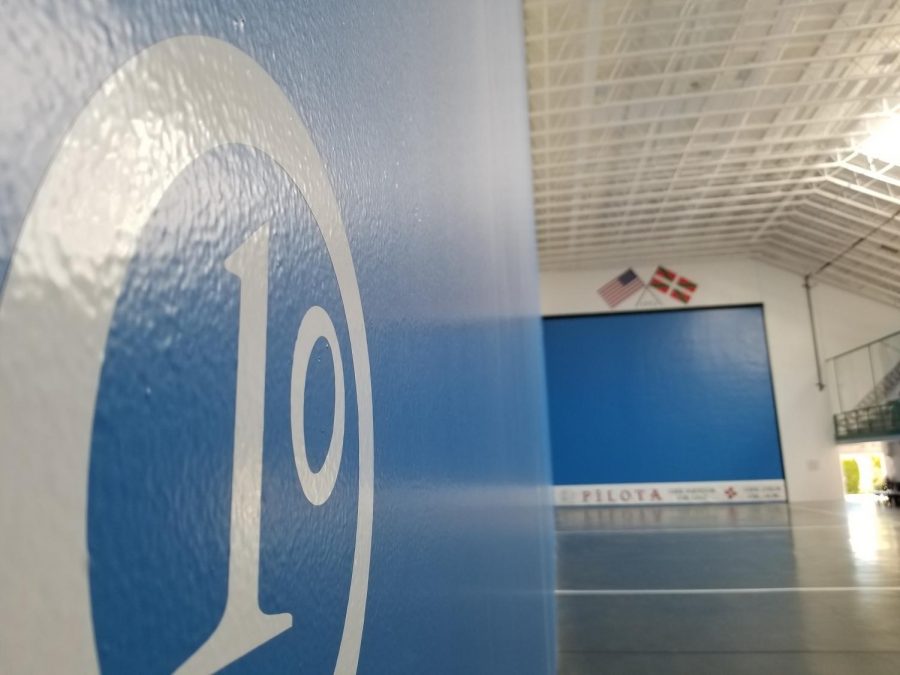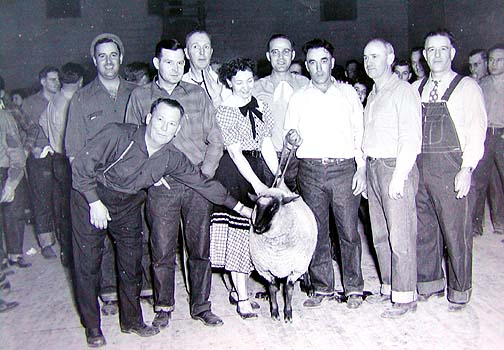The sandstone handball court was once the scene of heated competitions between Basque immigrants who populated this high desert valley in southeastern Oregon. The Jordan Valley handball court, or pilota fronton, as it’s referred to by Basques, was built in 1915 by Basque masons who carted in hand-crafted stone from a nearby quarry.
To help preserve the aging landmark, the tiny city of Jordan Valley is seeking contributions from the public.
“It’s part of our culture, it’s part of our heritage and it brings our community together,” Jordan Valley Mayor Sheila Quintero said of the court during an interview with Euskal Kazeta.
The handball court is listed on the National Register of Historic Places and was renovated in 1997.
But over the years, the harsh weather of the Great Basin — wet and freezing in the winter, hot in the summer — has taken a toll on this beloved cultural landmark. The walls were cracked and water damaged; sun and rain faded an informational sign featuring a primer on handball and interesting historical details about Basques in the region.
The city recently received a $9,000 grant from the Malheur Cultural Trust. The grant, along with other funds, was used to cover the costs of filling cracks and repairing the damaged walls, as well as other masonry work, Quintero said.
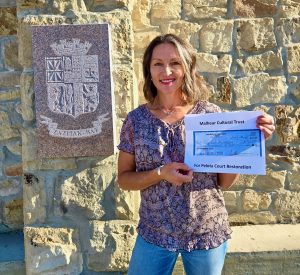
The next phase, according to the mayor, will focus on upgrading benches and the informational sign. To help cover these costs, the city is soliciting donations from now until October 1. Anyone who contributes $100 or more will have their name engraved on a brick that will be placed near the court.
For information about donating, contact the City of Jordan Valley at (541) 586-2460 or [email protected]. You can also write a check to the City of Jordan Valley (put Pelota Court Fund in the memo line). Checks can be mailed to the City of Jordan Valley, PO Box 187, Jordan Valley, Oregon 97910.
The 35-foot-tall handball court is located on Highway 95, Jordan Valley’s main drag, and is a dominating presence as you drive through this town of a mere 138 people. It’s the only Basque handball court in Oregon.
“It has withstood time in a harsh environment,” said Xabi Berrueta, who has researched the history of Basque pilota and promoted international competitons. The structure, he added, is a testament to the importance it held for the Basques who played and gathered there during their time away from work.
History of Jordan Valley
The first Basques, believed to be Antonio Azcuenaga and José Navarro, arrived in Jordan Valley around 1889 and raised sheep. Other Basques, mostly from the province of Bizkaia, soon joined them. Local mining operations provided employment for some, but the majority were involved in sheep herding and ranching. Within 30 years, Basques dominated the local population, and Jordan Valley was referred to as “the Basque settlement,” Euskal Kazeta Editor Nancy Zubiri wrote in her book “A Travel Guide to Basque America.”
Early Basque settlers established several local ranches and built sandstone buildings around town. These included three boarding houses for sheepherders, as well as St. Bernard’s Catholic Church, which was constructed with the help of Irish immigrants. The church can still be seen today off Highway 95. Basque immigration to the area slowed with the passing of the Taylor Grazing Act of 1934, which regulated livestock grazing on open ranges and led to a reduction in sheepherding.
According to Zubiri, the pilota court was built by Basque stonemasons who included Ambrosio Elorriaga and Domingo Yturri. Elorriaga’s family operated a boarding house next to the court, where sheepherders stayed and ate meals during periods when they were not toiling on the open range.
Two men from the Elorriaga and Yturri families —both first cousins— became elected and civic leaders, Zubiri notes in her book. Anthony Yturri was a four-term state senator and later headed the Oregon Transportation Commission. He was the first Basque American to graduate from law school (1937). John Elorriaga was a businessman, community leader and president of U.S. Bank.
Today, the Elorriaga home is a small Basque museum, located just a few steps from the historic handball court.
Read More Stories About Handball
Once the pilota court is refurbished, Jordan Valley mayor Quintero would like to hold additional fundraisers to help pay for upkeep of the historical structure. One of her ideas is a Basque cultural event that aligns with the annual San Inazio Basque festival in Boise, Idaho, about a 90-minute drive from Jordan Valley. People driving to or from the Boise event could make the stop in Jordan Valley.
A similar Basque festival took place on Sept. 13, 1997, to celebrate the renovation of the pilota fronton. Basque dancers and weight lifters performed for the crowd, which also enjoyed handball matches and feasted on Basque chorizo, or pork sausage, and lamb burgers, according to an article from the Argus Observer community newspaper and a pamphlet published by the city of Jordan Valley after the event.
Then in fall 2004, a special Basque celebration took place again at the pilota fronton, according to a 2004 newsletter published by NABO, or the North American Basque Organizations, which helped sponsor the festival and represents Basque clubs in the U.S. and Canada.
Mayor Quintero envisions a similar fundraiser. The event, she said, could feature Basque cooking, as well as handball matches and Basque strongmen competitions. She notes that Jordan Valley residents enjoy football and rodeo, among other athletic endeavors. So a fundraiser featuring Basque sports centered around the handball court would be a good fit.
“Our community,” Quintero said, “likes to stay active.”
